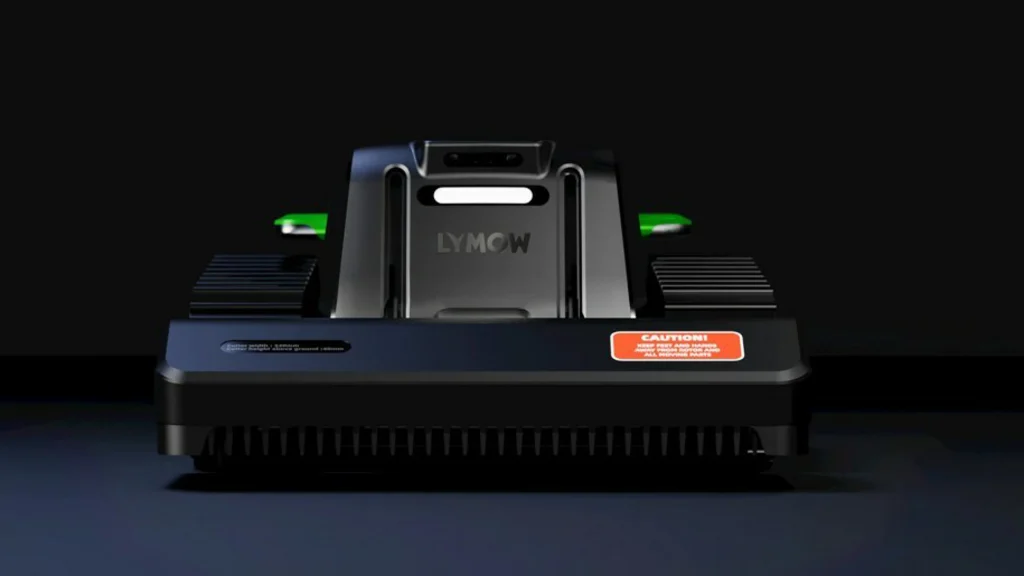Skeptics scoffed in 2002 when Roomba introduced the robot vacuum to homeowners. That didn’t last very long as the little round device quickly became a fixture in millions of households. Now the lawn care industry is hoping for the same sort of revolution as the robots make their way to the front yard.
Robot lawn mowers aren’t exactly new at CES, but there are a growing number on display this year. Manufacturers are hoping that the convenience and regained leisure time they offer will be enough to rope in American homeowners. And analysts say this could be the year they start to break through.
The challenge the manufacturers of these devices face is similar to the one robot vacuum manufacturers did in the early part of this century. Would Americans welcome a robot into their home and would the devices do as good a job as existing models? The answer, for the vacuum industry, of course, proved to be a resounding yes, with the market valued at $4.48 billion in 2021, with an expected annual growth rate of 23.4% through 2030.
Robot lawn mower sales, meanwhile, are expected to reach $10.62 billion by 2032, with a projected growth rate of 12% per year, according to Grand View Research.
At CES this year, Segway is leading the charge to make robot mowers a mainstream product. The company is showcasing the Navimow X3 series, which can cut up to 2.5 acres, double the efficiency of the current model. It also boasts a string trimmer, meaning homeowners not only can forego trudging up and down their yard in the midst of summer heat, but can bypass pulling out the edger to neaten up areas along fences and driveways.
“With over 200 robotic innovations . . . we’ve reduced over 1.13 million kilograms equivalent of carbon emissions so far,” says George Ren, CEO of Segway Navimow. “I believe with Segway Navimow X3 Series . . . we will continue to make significant steps in transforming traditional outdoor power tools into smart, automated solutions for American households.”
The Navinow X3 will also interact with smart home devices, such as Amazon’s Alexa and Google Home, meaning you can order your lawnbot to get to work as you fetch another beer from the fridge.
It hits stores this spring. Pricing for the device hasn’t been announced, but current Navimow mowers, already on sale, run for anywhere from $999 and up.
A few booths over at CES, the Lymow One is on display, featuring professional-grade mulching blades, treads instead of tires (helping it tackle steep hills), and the capability of mowing a quarter-acre in an hour. It’s slated to begin distribution in April at a cost of $2,999.

A bit further down, Yarbo is showcasing its own all-in-one yard solution, which will do everything from mow your yard to blow leaves to act as a robot snowblower, depending on the accessories you purchase. (If you want a machine that will do all of that, be prepared to pay over $5,000.)
These newcomers, and several others at the show, will face an already hefty existing lineup of robot mowers from companies ranging from Husqvarna to Positec Group’s Worx line. And this spring, Toro is expected to launch the long-in-gestation Haven robot mower with prices starting at $3,499.

So far, the adoption rate for robot mowers in the U.S. has been fairly low, though there was a COVID-19 spike in buying. In Europe, however, they have been popular for years. Prices for new models are roughly on par with that of a riding mower, but entry level units can run for less than $700 (those typically use a boundary wire, which requires some installation by the homeowner).
Older models tend to meander around the yard in a random pattern, but many of the new models on display at CES will mow in a consistent pattern, say manufacturers, giving the yard a neater appearance.
The blades on the devices, which usually are small and spin in rapid succession, are tucked under the carriage, ensuring that if you happen to walk into the mower, the risk of injury is low. And if lifted, the mowers automatically shut down as an added safety feature. Camera-based models identify obstacles (which can range from toys left in the yard to curious pets) and work around them. And you can train the mower to stay out of certain areas, ensuring that your begonias don’t get chewed up.
Grass is cut daily (or as frequently as you prefer), so there’s never any need to worry about bagging it or raking. If the mower senses rain or water, it will automatically return to its charging station. And systems are quiet compared to push and rider mowers—and can easily be run at night without disturbing neighbors.
“This is a fully automatic and intelligent platform that people can set and forget,” says Mandy Xie, chief scientist and cofounder of Lymow. “You don’t need to go out into the heat of summer anymore to cut the grass.”
Accedi per aggiungere un commento
Altri post in questo gruppo

The flash floods that have devastated Texas are already a difficult crisis to manage. More than 100 people are confirmed dead

Amazon is extending its annual Prime Day sales and offering new membership perks to Ge

How would you spend $342 billion?
A number of games called “Spend Elon Musk’s Money” have been popping up online, inviting users to imagine how they’d blow through the

On Tuesday, AI lab Moonvalley

As Elon Musk announced plans over the Fourth of July weekend to establish a third political party,

Dolores Ballesteros, a Mexico-based mother of two, was getting desperate. Her 6-year-old son kept hitting his brother, age 3, and seemed angry at her all the time. No matter what she did, she coul
